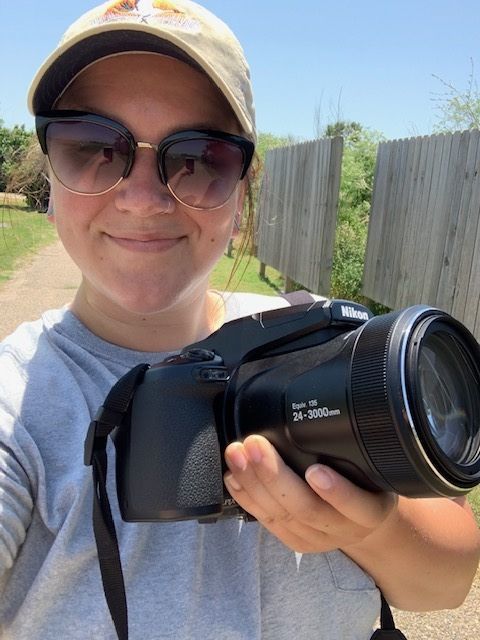
Welcome back!
I would like to start by thanking everyone who has continued to read my social media and blog posts as the first ever Saunders Conservation Fellow at the Crane Trust. I was honored to represent the Saunders Trust through this internship and am excited to be able to continue working for the Crane Trust into next year, but before I talk about what’s to come…I would like to reminiscence on my time as the Saunders Fellow.
Over the last six years I have worked in various natural resource positions, but none have given me the range of opportunities like the Saunders Conservation Fellowship. Not only have I been able to help with over fifteen different projects here, but I have been able to work alongside some of the most passionate and hard-working people I have ever met (Pictured Below).

Even though I was familiar with some of the surveys (i.e., small mammal trapping), the variety of other Crane Trust surveys allowed me to work with species I would have never dreamed of. Species I had never seen before, such as regal fritillaries, bumblebees, and bison, exist on the unique habitats throughout Crane Trust properties. This array of experiences has given me the opportunity to grow beyond what I had imagined for myself. It can be easy to get bogged down in a position or run into a mundane routine, but I never felt this way at the Crane Trust. Even though this position is a short-term internship, my input always felt heard and I became a valuable member of the research team.
While I could write all day about my experiences, I would like to share one of my favorite memories while working at the Crane Trust. It was the day I finally caught the Southern Plains Bumblebee, a species of concern in Nebraska (I can try and link the Facebook post here). Bumblebees provide amazing benefits to prairie ecosystems by helping sustain the health and biological integrity of the vegetation through pollination. Though the Crane Trust only joined the Nebraska Bumble Bee Atlas (discussed in Collaboration is key!) last year, we have documented 5 different species so far, including the Southern Plains. As the only species of concern whose range overlapped with Crane Trust property, the Southern Plains is one of our target bumble bee species. Last year the Crane Trust only found three Southern Plains around their properties, but this year…we successfully captured 27! Despite finding more Southern Plains, it seemed that only Jenna Malzahn, the Jr. Wildlife Biologist, and Matthew Schaaf, the Lila O. Wilson Intern, were able to capture them. As time passed and surveys were coming to an end, I thought I may never capture one. During a particularly slow survey on one bright and sunny day in September, I captured a single bee. We don’t identify the bumbles until the end of the survey and when it came time, we were all ecstatic to see that my species was, in fact, a Southern Plains bumble bee. I was instantly overwhelmed with joy and relief. To think I had a hand in documenting this species of concern in new habitat types was a memory I will never forget, and I owe the moment all to the Crane Trust!
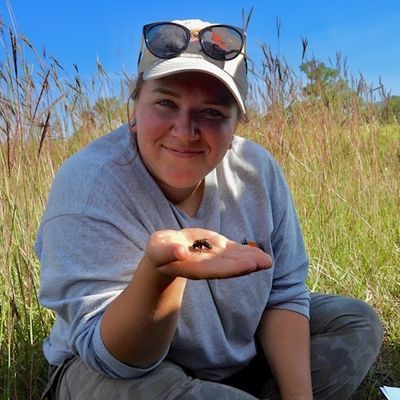
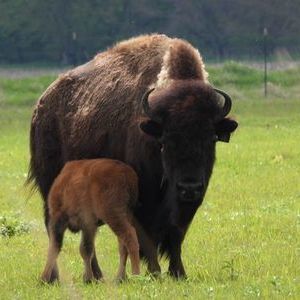
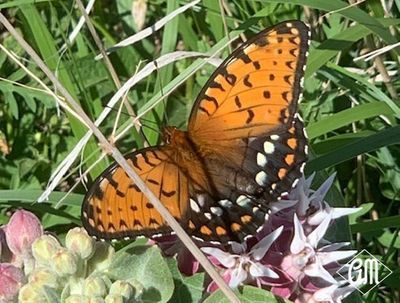
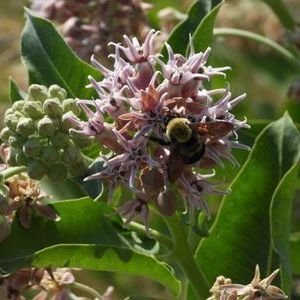

(Top: Me with my first ever Southern Plains bumblebee; Top Left: American bison with calf; Top Right: Regal fritillary; Bottom Left: Common Eastern bumblebee; Bottom Right: American deer mouse)
On top of these memories, one of the most exciting aspects of this internship was the range of species the Crane Trust researches. From birds to seeds, the Crane Trust utilizes a holistic approach when it comes to making management decisions. Understanding how the landscape and its inhabitants connect is vital. The Crane Trust’s comprehension of this understanding is apparent from the sheer amount of research that is done throughout the year. If you or someone you know is interested in the natural resource world, I could not suggest the Crane Trust more, especially for new graduates looking for a broad and hands-on internship. Not only did the Crane Trust staff teach me a lot about long-term monitoring and adaptive management that will help me in future careers, but every single employee left me with knowledge about a species and/or an ecosystem that I will truly never forget.
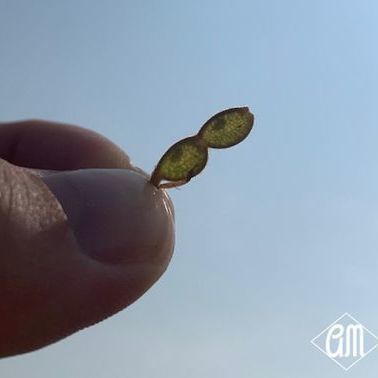
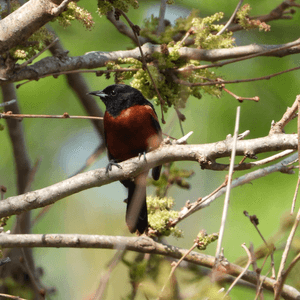
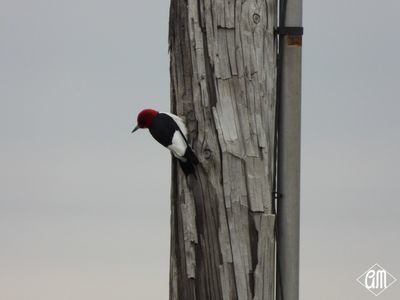
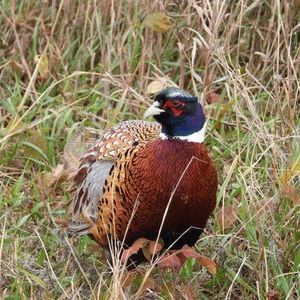

(Top: Illinois Tick Trefoil seed; Top Left: Orchard oriole; Top Right: Red-headed woodpecker; Bottom Left: Ring-necked pheasant; Bottom Right: Eastern kingbird)
Bringing awareness to the incredible and vital work of the Crane Trust through my social media and blog posts has opened me up to the importance of education and outreach. Which is why I am both excited and thankful to announce my new position as the Outreach Specialist at the Crane Trust Nature and Visitor Center in 2022!
I thought it would be fitting to finish my last blog post with a comment I made during my interview. “I grew up surrounded by trees, so when I look out into a prairie all I see is grass. I know there is more than that, which is what I am hoping to learn from this internship.” And boy, did I learn. Thank you again, Saunders Trust, the Crane Trust, and the science team for sparking this newfound love for tallgrass prairie ecosystems that I will take with me in future careers to come.
Signing off for the last time as the Saunders Conservation Fellow,
Amanda Medaries

